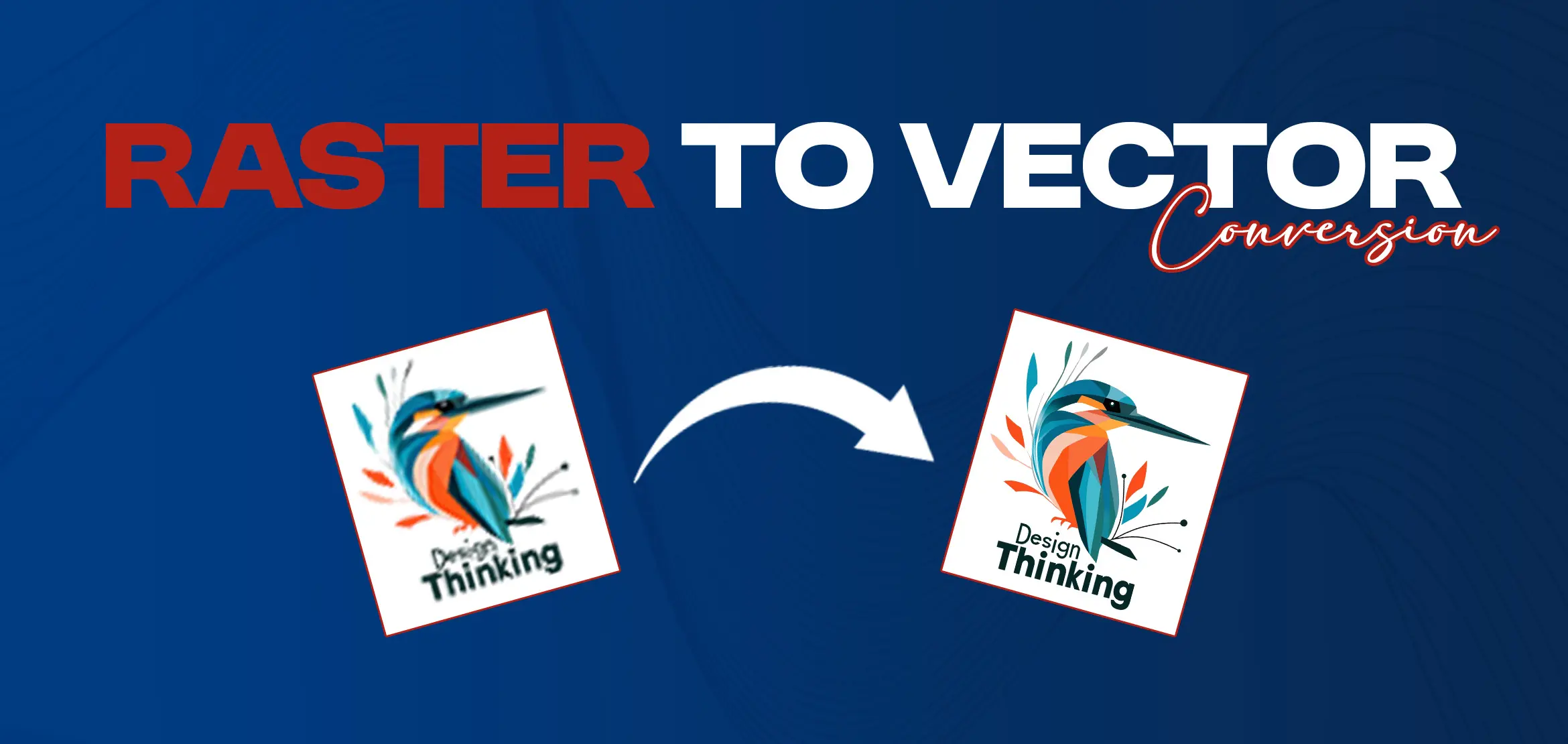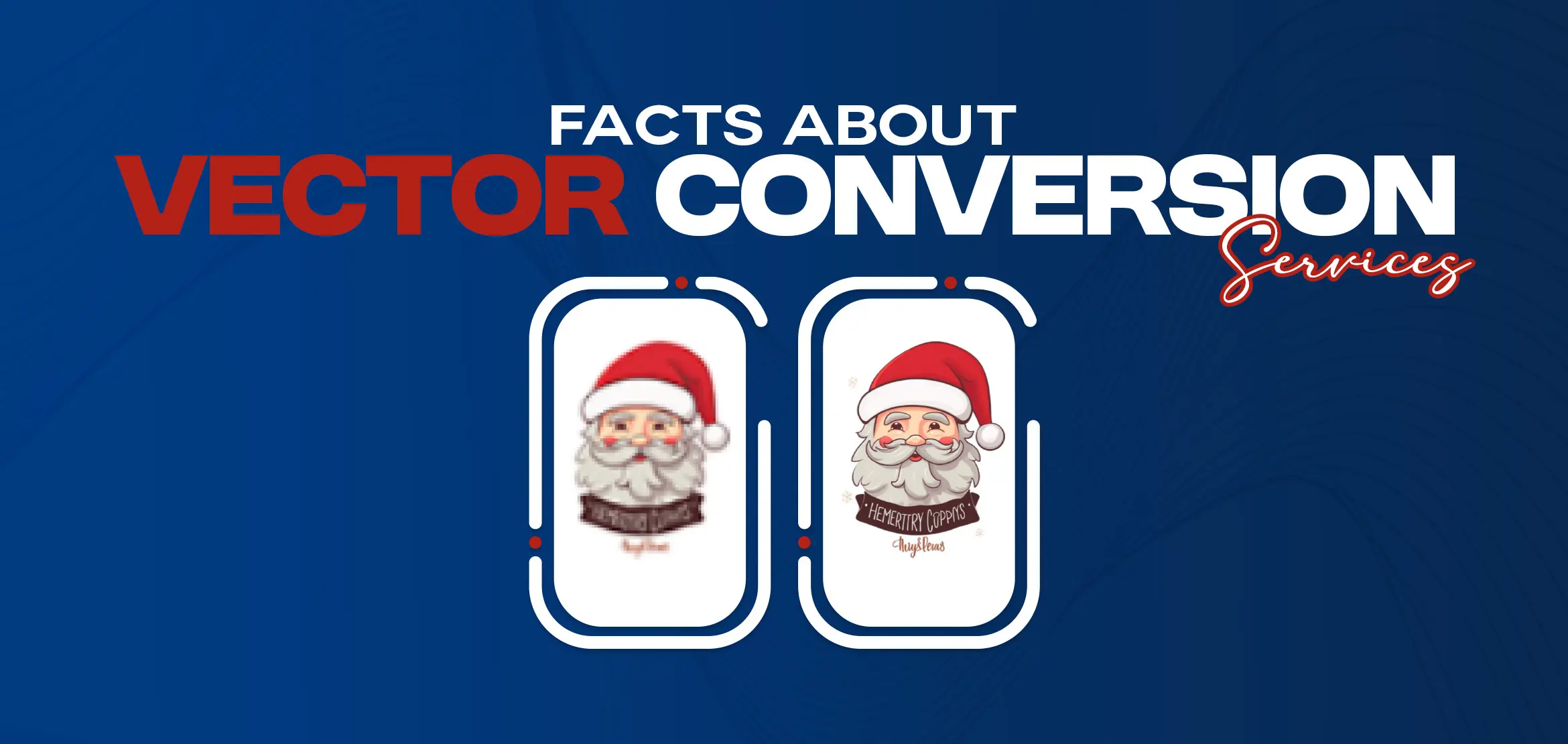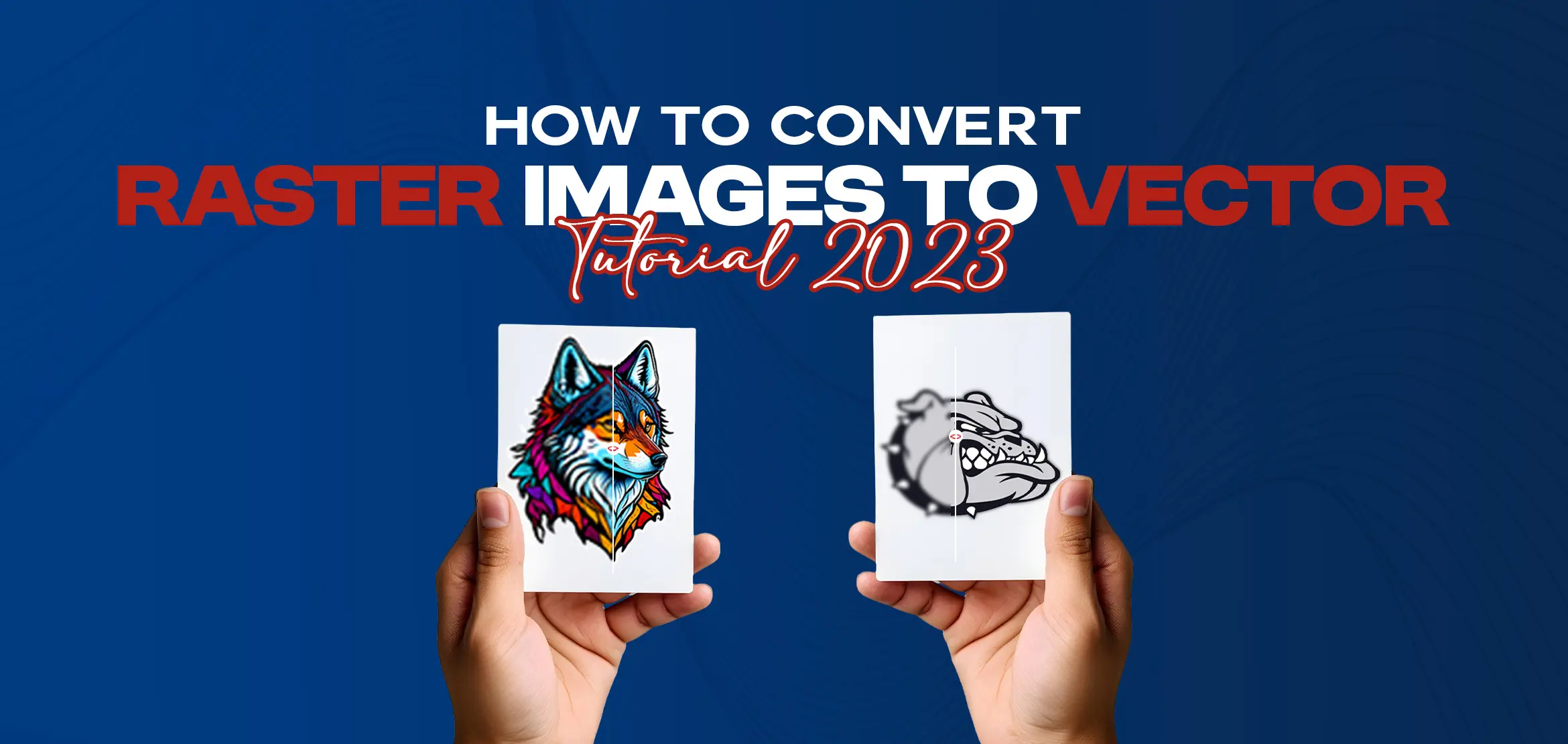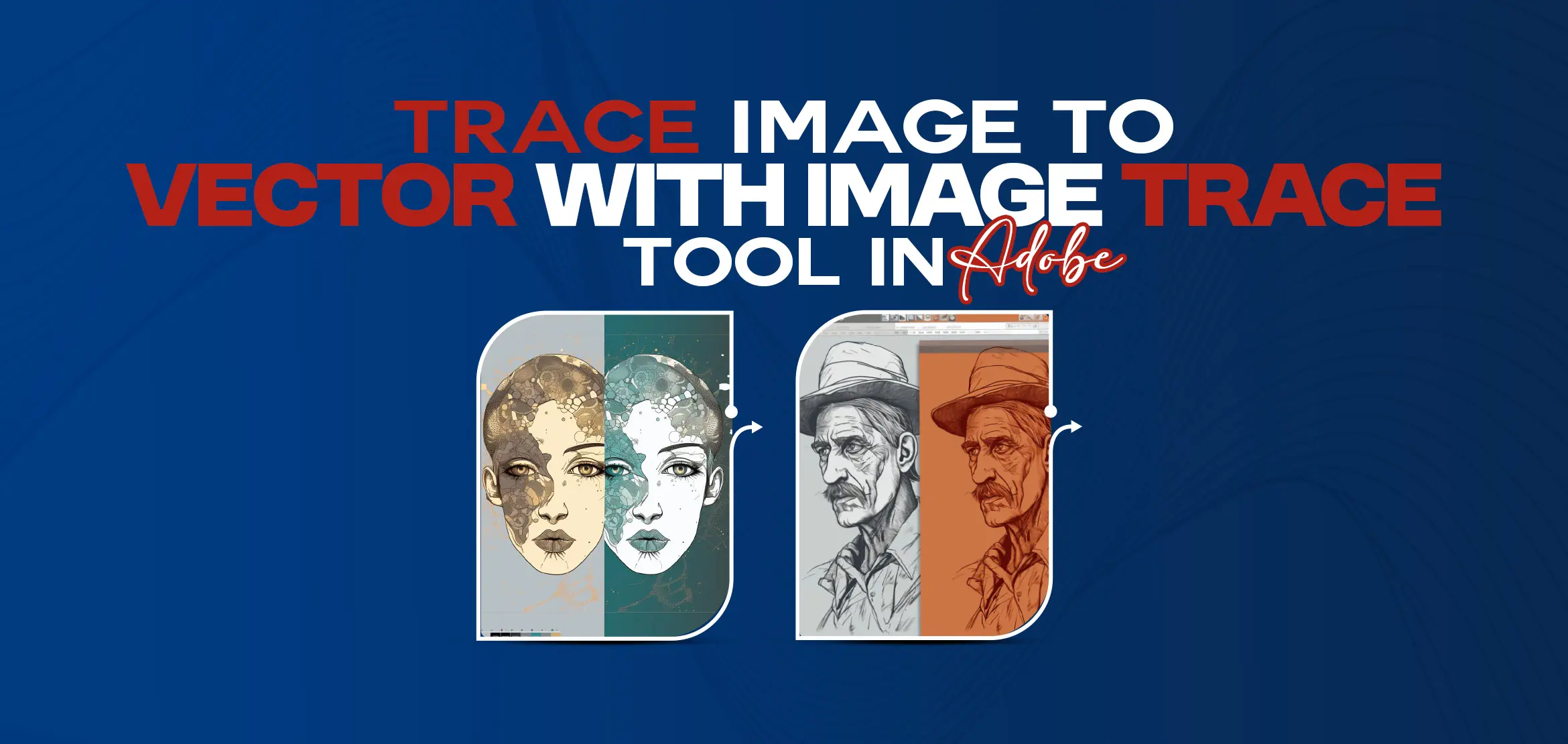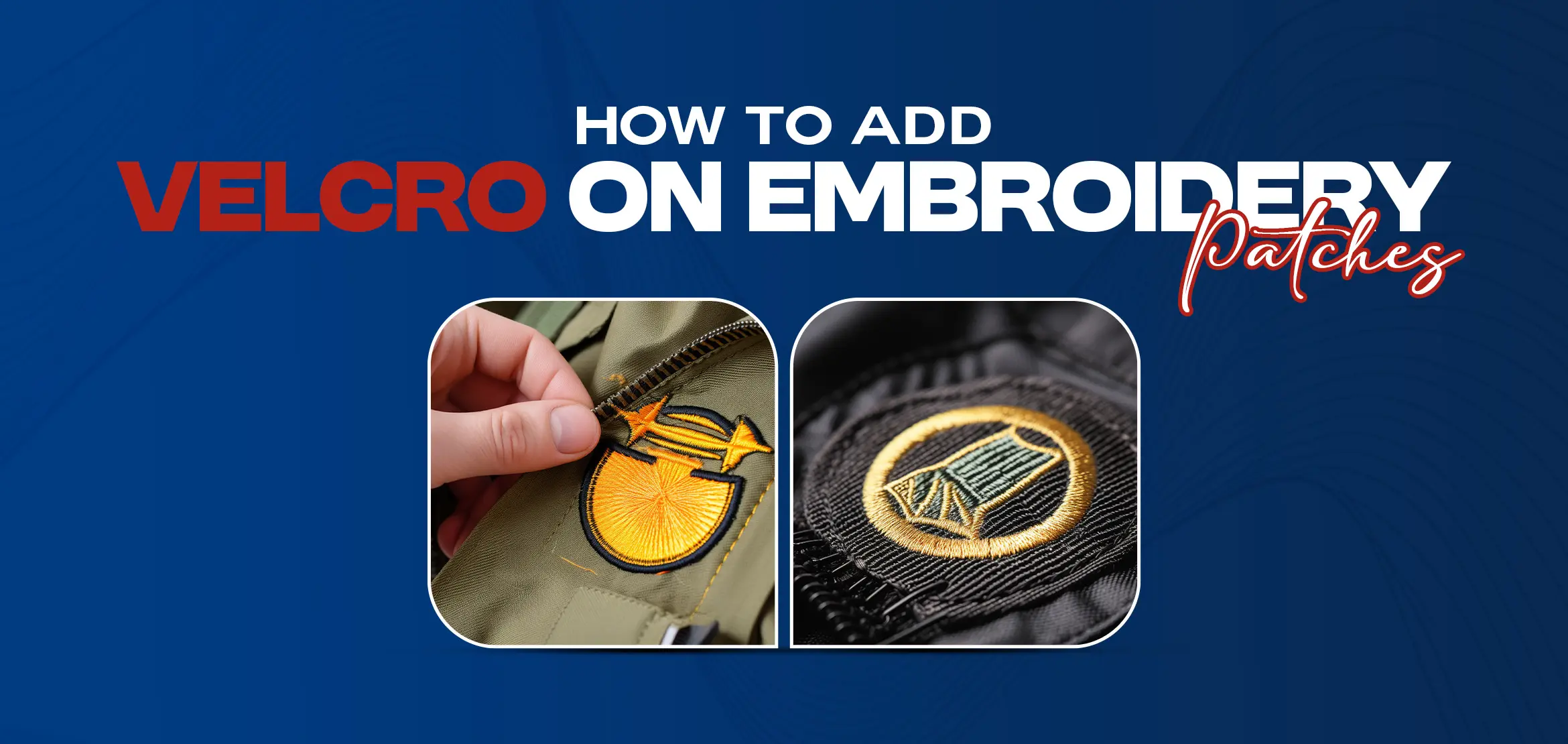
How to add Velcro on Embroidery Patches
Table Of Content
- 1. Benefits of Using Velcro Patches
- 2. Types of Velcro Patches
- 1. Velcro Hook Patches
- 2. Velcro Loop Patches
- 3. Adhesive Velcro Patches
- 4. Embroidered Velcro Patches
- 3. Custom Embroidery Patches
- 1. Size and Shape
- 2. Border Stitch Type
- 3. Patches Color
- 4. Base Fabric
- 5. Type of Thread
- 4. Custom PVC or Woven Patches
- 4.1 PVC Patches
- 4.2 Woven Patches
- 5. Iron-on Patches
- 6. Hot Knife and Hot Water for Applying Velcro Backing Option
- 7. Design Process for Sewing On Velcro Patches
- 8. Choose the Type of Patch You Want to Apply with Velcro
- 9. Select the Appropriate Size of Patch and Design It Accordingly
- 10. Type of Backing Option You Want to Use for Your Patch
- 1. Sew-on Backing
- 2. Iron-on Backing
- 3. Velcro Backing
- 11. Prepare Your Sewing Machine
- 1. Gather the necessary accessories
- 2. Thread your sewing machine
- 3. Choose the right stitch
- 4. Trim the edges carefully
- 12. Step by Step Instructions to Attach a Velcro Patch on Clothing Item
- 12.1 Preparing the Cloth for the Attachment of the Patch
- 2. Cut the Fabric
- 3. Add Design or Embroidery
- 12.2 Positioning the Patch in Place on the Article of Clothing
- 1. Lay the article of clothing flat on a surface
- 2. Smooth out any wrinkles or creases
- 3. Place the patch on the desired location of the clothing
- 4. Align and center the patch
- 5. Secure the patch temporarily
- 6. Double-check the positioning
- 7. Remove excess fabric or thread
- Conclusion
- FAQs (Frequently Asked Questions)
Velcro patches are a popular choice for adding functionality and versatility to embroidery patches. They are a convenient way to attach and detach patches from various surfaces, making them ideal for use on clothing items, bags, hats, and more. Velcro patches consist of two parts, the hook side and the loop side. The hook side has stiff bristles that latch onto the loop side, which has a soft, fuzzy texture. When the two sides are pressed together, they create a secure bond that can withstand everyday movement. Making them perfect for active individuals and teams. Velcro patches also allow for easy customization, as they can be easily swapped out or removed when needed. With a variety of shapes, sizes, and designs available, velcro patches offer a multifaceted option for adding a touch of personalization to any garment or accessory. Velcro patches offer a multitude of benefits when it comes to attaching patches to clothing and other fabric items. The convenience and flexibility of Velcro make it an ideal choice for patch enthusiasts. One of the main advantages of using Velcro patches is the ease of removal and reapplication. Unlike sewn-on or adhesive patches. Velcro patches can be effortlessly detached and reapplied whenever needed. This allows for quick changes or adjustments to patches without damaging the clothing or fabric item. Another benefit of Velcro patches is the customization options they provide. They can be made with different designs and sizes to suit individual preferences. Whether it's a custom insignia, intricate design, or a specific patch size. Velcro patches can be tailored to meet the desired specifications. The versatility of Velcro also allows for using it on a variety of clothing items. From uniforms and jackets to bags and hats, Velcro patches can be securely attached to almost any fabric surface. The benefits of using Velcro patches include convenience and flexibility with easy removal and reapplication. As well as the ability to customize with different designs and sizes. Its versatility makes it a popular choice for individuals and groups alike. Particularly airsoft teams, paintball teams, and sports teams, who can easily switch out patches to match different events or team affiliations. When it comes to Velcro patches, there are several types available to choose from, each offering its own unique benefits. Firstly, there are the traditional Velcro hook patches, where one side is equipped with tiny hooks and the other side has loops. These patches are commonly used and have a strong grip when attached to a corresponding Velcro strip. Another type is the Velcro loop patches, which have a soft Velcro loop edge all around the patch. These patches are ideal for adding clean edges to the design, giving it a polished and professional look. Velcro loop patches are often favored by airsoft teams, paintball teams, and sports teams due to their exact shape and variety of shapes available. For those looking for a more multifaceted option, there are adhesive Velcro patches. These patches have a sticky backing that adheres directly to the fabric, eliminating the need for sewing or additional embroidery tools and accessories. Adhesive Velcro patches are easy to use and can be attached to any clothing item or piece of fabric. Lastly, there are embroidered Velcro patches. These patches are made by using an embroidery machine to stitch the design directly onto the patch base fabric. Embroidered Velcro patches offer a high level of craftsmanship and can be made with intricate designs and custom hooks. When choosing Velcro patches, it's important to consider the different types available and select the one that suits your needs best. Whether it's the traditional hook and loop patches, Velcro loop patches, adhesive Velcro patches, or embroidered Velcro patches. There is a wide range of options to choose from. Explore the variety and find the perfect Velcro patch for your custom design or logo. When it comes to custom embroidery patches, there are several options to choose from, each with its own unique characteristics. Firstly, there is the consideration of size and shape. Custom embroidery patches can be made in various sizes and shapes, allowing for a personalized look that fits your specific needs. Whether you're looking for a small circular patch or a larger rectangular one, the possibilities are endless. Next, the border stitch type is an important factor to consider. Your custom embroidery patch can be finished with various types of border stitches, such as a satin stitch, merrowed edge, or a 3D puff border. This adds a decorative and professional touch to the patch. Color is another aspect to think about. Custom embroidery patches can be created in a wide range of colors, allowing you to match your patch design to your specific branding or personal preferences. The base fabric of the patch is also crucial. Options include cotton, polyester, or even leather, each with its own unique texture and durability. Lastly, the type of thread used for the embroidery plays a significant role in the patch's overall look and feel. Options include polyester, rayon, or metallic thread, each offering its own distinct sheen and texture. With these considerations in mind, you can create custom embroidery patches that perfectly represent your unique style or brand. Custom PVC or woven patches are two popular types of custom patches that offer unique features and benefits. PVC patches are made from a flexible and durable material called Polyvinyl chloride. This material is resistant to harsh weather conditions, making it ideal for outdoor use. PVC patches are also waterproof, ensuring that they stay intact and vibrant even in wet environments. These patches are created by molding the design onto a PVC base, resulting in a three-dimensional effect. They are known for their durability and ability to withstand heavy wear and tear. On the other hand, woven patches are made by weaving threads together to create a design. They are usually made from polyester or cotton threads, ensuring flexibility while maintaining strength. These patches are known for their intricate designs and clean edges. Woven patches have a high level of detail and can accurately replicate logos, names, or other intricate embroidery designs. Both PVC and woven patches are versatile and can be used for a variety of DIY projects and repairs. They can be attached to clothing items, backpacks, hats, or any other fabric-based item that needs a personalized touch. These patches are commonly used by airsoft teams, paintball teams, sports teams, and more. When choosing the right fabric material for making patches, it is important to consider the intended use. Polyester and cotton are popular choices as they are durable, lightweight, and can withstand frequent washing. It is crucial to select a fabric that can handle the wear and tear it may be subjected to. Additionally, the fabric should be compatible with the embroidery process to ensure clean and professional-looking patches. Iron-on patches are a popular choice for adding embroidered designs to fabric items. To attach an iron-on patch, start by cutting the fabric into the desired shape. This can be done using a pair of scissors, making sure to leave a small border around the design for clean edges. 1. Place the fabric on top of an interfacing material, such as a thin piece of fabric or a heat-resistant adhesive sheet. This helps stabilize the fabric and prevents it from fraying. 2. Preheat your iron to the temperature recommended for the fabric you're working with. Place the iron-on patch on top of the fabric, making sure the adhesive side is facing down. 3. With the iron heated, press it firmly on top of the patch and fabric, applying even pressure for about 10 to 15 seconds. Be sure to cover the entire area of the patch with the iron to ensure a secure bond. 4. Allow the fabric to cool before handling it to ensure the adhesive has fully bonded. Once cooled, check that the patch is securely attached by lightly tugging on the edges. If needed, repeat the ironing process for any areas that haven't fully adhered. Iron-on patches are a simple and effective way to customize your clothing items with embroidered designs. With a few easy steps and the right materials, you can add a touch of personalization to any fabric item. Adding Velcro backing to embroidery patches can provide versatility and easy attachment options. One method to accomplish this is using a hot knife and hot water. 1. Firstly, determine the desired size and shape for the Velcro strip that will be attached to the patch. Using a hot knife, carefully cut the Velcro strip to the specified dimensions. The hot knife not only cuts the strip but also seals the edges, preventing fraying and ensuring a clean appearance. 2. Next, heat a pot of water to a temperature suitable for activating the adhesive on the Velcro strip. Submerge the cut Velcro strip into the hot water, allowing the adhesive to activate. This process allows for a stronger bond between the Velcro strip and the patch fabric. 3. Once the Velcro strip has been submerged long enough for the adhesive to activate, remove it from the hot water and shake off any excess liquid. Place the Velcro strip onto the back of the patch, aligning it in the desired position. Firmly press down on the strip to ensure a secure bond. 4. Lastly, allow the patch and Velcro strip to cool and dry completely before handling. This will ensure that the adhesive sets properly. By using a hot knife and hot water, you can create Velcro-backed patches that are durable and securely attached. When it comes to adding Velcro to embroidery patches, the design process is a crucial step to ensure a secure and professional-looking result. Before diving into the sewing process, it is important to determine the desired size and shape for the Velcro strip that will be attached to the patch. This will ensure that the Velcro strip fits seamlessly onto the patch, allowing for easy attachment to clothing or other items. Once the size and shape are determined, the next step is cutting the Velcro strip. Using a hot knife, carefully cut the Velcro strip to the specified dimensions. The hot knife not only cuts the strip but also seals the edges, preventing fraying and ensuring clean edges for a polished appearance. After the Velcro strip has been cut, it is time to activate the adhesive. Heat a pot of water to a suitable temperature and submerge the cut Velcro strip into the hot water. This will activate the adhesive and allow for a stronger bond when attaching the Velcro strip to the patch fabric. Once the adhesive is activated, remove the Velcro strip from the hot water and shake off any excess liquid. Carefully place the Velcro strip onto the back of the patch, aligning it in the desired position. Apply firm pressure to ensure a secure bond between the strip and the patch. By following these design process steps, you can easily sew on Velcro patches and enjoy the versatility and functionality they bring to your clothing or other items. When it comes to adding Velcro to embroidery patches, the first step is to choose the type of patch that you want to apply with Velcro. There are several options available, including custom embroidery patches, custom PVC or woven patches, and iron-on patches. Custom embroidery patches are a popular choice as they offer a high-quality and professional look. These patches are made using embroidery machines and can be created with intricate designs and details. They can easily be sewn onto a variety of clothing items. Custom PVC or woven patches are another option. PVC patches have a rubber-like texture and are known for their durability and flexibility. Woven patches, on the other hand, are made by weaving threads together and offer a more intricate and detailed design. Iron-on patches are a convenient option, as they can be easily applied to clothing using heat from an iron. They come with a heat-activated adhesive on the back, which bonds the patch to the fabric. Each type of patch has its own benefits and features, so choose the one that best suits your needs and preferences. Whether you prefer the professional look of custom embroidery patches. The durability of PVC or woven patches, or the convenience of iron-on patches. Adding Velcro to any of these patches can provide a multifaceted option for fast and easy attachment to clothing items. When it comes to custom patches, selecting the appropriate size is crucial to ensure a visually appealing design. The size of the patch will depend on various factors, including the purpose of the patch and the space available for it on the clothing item or accessory. Before determining the size, consider the intricacy of the design and the amount of text involved. Intricate designs with fine details may require a larger patch size to maintain the clarity of the design. Additionally, if you plan to include text on the patch, make sure it is legible and not too small to be easily read. Common patch sizes vary depending on the type of patch. For example, scout patches typically range from 2 to 3 inches in diameter. While fire and police patches are often larger, ranging from 4 to 5 inches. Security patches are usually around 3 inches, while military and biker patches can range from 4 to 6 inches in width or height. Logo patches are available in various sizes, depending on the desired visibility of the brand. Soccer patches are commonly around 3 to 4 inches in diameter. By taking into account the details of the patch design and the appropriate size, you can create a custom patch that perfectly fits your needs and complements any clothing item or accessory. When it comes to attaching velcro patches, you have a few different options for the backing. Let's explore these options and discuss the benefits and uses of using the velcro backing option for your custom patches. One common option is the sew-on backing, which requires using a sewing machine to attach the patch to the article of clothing or fabric item. This option provides a secure attachment and is ideal for patches that will be laundered frequently or are intended for heavy use. Another option is the iron-on backing, which uses heat to bond the patch to the fabric. This option is great for patches that won't be subjected to harsh washing or drying conditions. However, if you want a more versatile and convenient option, consider the velcro backing. This multifaceted option allows for easy attachment and removal of patches on a variety of fabric items. With a velcro strip, you can simply press the patch onto the base fabric and it will stay in place securely. When you want to remove or switch out the patch, just pull it off and attach a new one. The velcro backing option is particularly beneficial for patches with intricate designs or custom shapes, as it allows for clean edges and easy placement. It is a preferred choice for airsoft teams, paintball teams, sports teams, and military groups. Who frequently change patches based on different missions or events. To add Velcro on embroidery patches using a sewing machine, it is essential to prepare your machine with all the necessary accessories and threads. Here are the steps you should follow: Before you start sewing, make sure you have the appropriate tools on hand. You will need a suitable needle for sewing Velcro and consider using a presser foot designed for hook and loop closures if available. These accessories will make the sewing process easier and ensure a secure attachment. Choose a thread color that matches your patch and thread your sewing machine with it. Ensure that you have enough thread on the bobbin and the spool to complete the sewing process without interruption. When sewing around the edges of the Velcro, it is best to use a zig-zag stitch or a blind hem stitch. The zig-zag stitch provides a secure and flexible attachment, while the blind hem stitch creates a neat and invisible finish. After sewing, trim the excess fabric and Velcro edges carefully to avoid snipping through the threads. This step is crucial for achieving clean edges and maintaining the durability of the patch. By preparing your sewing machine with all the necessary accessories and threads, you can ensure a professional and secure attachment of Velcro on your embroidery patches. Remember to choose the appropriate needle, thread your machine correctly, use the right stitch, and trim the edges carefully for the best results. Adding Velcro to embroidery patches is a popular option for many individuals and teams to easily attach and remove patches from clothing items. Whether you want to personalize an article of clothing with custom patches or need a versatile option for sports or airsoft teams, attaching Velcro to patches can provide the flexibility and convenience you need. In this step-by-step guide, we will walk you through the process of attaching a Velcro patch on a clothing item, ensuring a secure attachment and clean finish. With the right tools and advanced digitizing techniques, you can add Velcro to your embroidery patches and create a multifaceted option for your custom designs. Before adding Velcro to embroidery patches, it is important to prepare the cloth properly. This will ensure a strong and secure attachment. Here are some steps to follow: 1. Prepare the Fabric: Start by choosing a durable fabric that can withstand wear and tear. This will ensure that the patch stays securely in place even with regular use. Avoid using delicate fabrics that may easily tear or fray. Measure and cut the fabric to the desired size. Make sure to leave enough excess fabric around the patch to create clean edges. A pair of scissors or a hot knife can be used to achieve clean cuts. Depending on your preferences, you can either add a pre-made design or create your own embroidery. This will give your patch a unique and personalized touch. Use embroidery machines or hand embroidery techniques to create intricate designs. By following these steps, you will be able to prepare the cloth for the attachment of the patch in a way that ensures durability and a clean appearance. Positioning the patch correctly on your article of clothing is crucial to ensure a professional and aesthetically pleasing result. Follow these steps to position your patch in place: Begin by placing your article of clothing flat on a clean and smooth surface. This will make it easier to position the patch accurately. Take the time to remove any wrinkles or creases from the fabric. This will ensure a smooth surface for the patch to adhere to. Determine the desired location for your patch. Whether it's on a jacket, backpack, or hat, make sure to choose a spot that is visible and complements your overall design. Carefully align the patch so that it is centered on the chosen spot. Use your eyes or a ruler to ensure that the patch is properly aligned. This will give your clothing a polished and professional look. Use pins or fabric markers to secure the patch in place temporarily. This will prevent any shifting or misplacement during the next steps. Step back and take a moment to double-check the positioning of the patch. This is your chance to make any adjustments before permanently attaching the patch. Trim away any excess fabric or loose threads around the patch. This will create clean and neat edges, further enhancing the appearance of your patch. By following these steps, you can ensure that your patch is positioned and centered correctly on your article of clothing, creating a professional and eye-catching look. In conclusion, adding velcro to embroidery patches offers a multitude of benefits. The versatility of velcro patches allows for easy attachment and removal, making it a convenient option for customization. Whether you're a part of an airsoft team, paintball team, or sports team, velcro patches allow you to display your custom insignia with ease. Additionally, the option of velcro backing gives you the flexibility to switch out patches depending on your mood or desired style. At Digitizing USA, you can find velcro patches in a variety of colors and sizes to suit your needs. With their high-quality materials and intricate designs. These patches with velcro ensure that your clothing items or accessories will stand out. Incorporating velcro into your patch design not only adds functionality but also allows for easy maintenance. If you need to clean your clothing item, simply remove the patch with velcro and send it to the dry cleaners or launder it separately. Whether you're looking for a multifaceted option for your patches or want the convenience of switching them out. Velcro patches are a fantastic choice. Explore the variety of velcro patches available at Digitizing USA and enhance your clothing items with these versatile and stylish additions. Q1. How do I sew on a Velcro patch? Sewing on a Velcro patch is quite simple. First, place your embroidery patch onto the desired area of your clothing item. Then, sew around the edges of the patch using a sewing machine or a needle and thread. Make sure to sew close to the edges to securely attach the patch. If you prefer a more secure attachment, you can also sew a few stitches across the center of the patch. Q2. Can I add Velcro backing to an existing embroidery patch? Yes, you can easily add Velcro backing to an existing embroidery patch. Start by measuring and cutting a piece of Velcro strip that matches the size of the patch. Apply fabric glue to the back of the patch and firmly press the Velcro strip onto it. Allow the glue to dry completely before attaching the patch to your clothing item. Q3. Is sewing Velcro patches tricky to work with? Sewing Velcro patches can be a bit trickier than attaching them with adhesive. It is important to use a heavy-duty sewing needle to avoid broken needles, as Velcro is a tough material. Additionally, you may need to go slow and be patient, as the Velcro can sometimes cause stitches to be skipped. Take your time and sew carefully for the best results. Q4. Can Velcro patches be washed and dried without any issues? Yes, Velcro patches can be washed and dried without any issues. However, it is recommended to remove the patch from your clothing item before washing. This ensures that the patch doesn't get damaged or lose its shape during the washing process. Once the clothing item is clean, simply reattach the patch using the Velcro backing. Q5. Are Velcro patches suitable for intricate designs? Absolutely! Velcro patches are perfect for intricate designs. The Velcro loop backing provides a secure grip, allowing even the most intricate designs to remain in place. Additionally, the clean edges of the Velcro loop ensure that the patch looks neat and professional when attached to your clothing item.1. Benefits of Using Velcro Patches
2. Types of Velcro Patches
1. Velcro Hook Patches
2. Velcro Loop Patches
3. Adhesive Velcro Patches
4. Embroidered Velcro Patches
3. Custom Embroidery Patches
1. Size and Shape
2. Border Stitch Type
3. Patches Color
4. Base Fabric
5. Type of Thread
4. Custom PVC or Woven Patches
4.1 PVC Patches
4.2 Woven Patches
5. Iron-on Patches
6. Hot Knife and Hot Water for Applying Velcro Backing Option
7. Design Process for Sewing On Velcro Patches
8. Choose the Type of Patch You Want to Apply with Velcro
9. Select the Appropriate Size of Patch and Design It Accordingly
10. Type of Backing Option You Want to Use for Your Patch
1. Sew-on Backing
2. Iron-on Backing
3. Velcro Backing
11. Prepare Your Sewing Machine
1. Gather the necessary accessories
2. Thread your sewing machine
3. Choose the right stitch
4. Trim the edges carefully
12. Step by Step Instructions to Attach a Velcro Patch on Clothing Item
12.1 Preparing the Cloth for the Attachment of the Patch
2. Cut the Fabric
3. Add Design or Embroidery
12.2 Positioning the Patch in Place on the Article of Clothing
1. Lay the article of clothing flat on a surface
2. Smooth out any wrinkles or creases
3. Place the patch on the desired location of the clothing
4. Align and center the patch
5. Secure the patch temporarily
6. Double-check the positioning
7. Remove excess fabric or thread
Conclusion
FAQs (Frequently Asked Questions)
